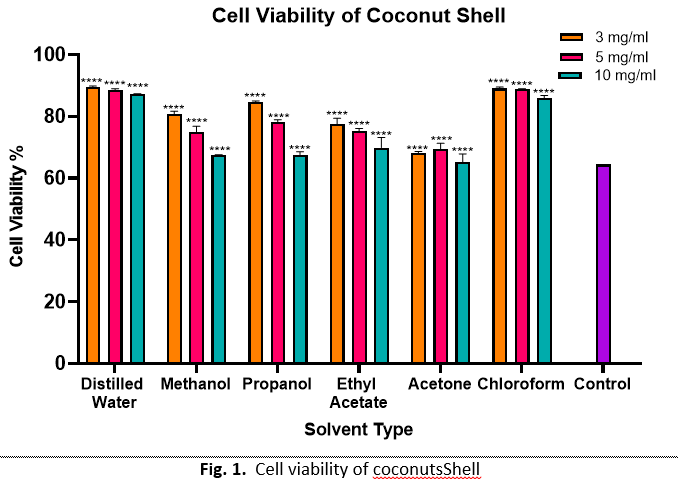Bioresources of Anticancer and Potential Medicinal Compound from Coconut Waste
DOI:
https://doi.org/10.37934/ard.119.1.1626Keywords:
Coconut wastes, anticancer, MCF-7, MTT assayAbstract
Cocos nucifera L. (family Arecaceae) commonly known as coconut is considered as an important fruit crop in tropical countries and are widely used for therapeutic and domestic purpose. They have effective properties such as antioxidant, antitumor, antiseptic and antimicrobial. The growing demand for green coconut water consumption and food industries cause the dumping of the shell and husk of this fruit, generating large amount of solid waste. This study utilized two parts of coconut waste which are shell and husk in order to determine the anticancer properties. Six different polarities of solvent were chosen. The anticancer activity via MTT assay showed that acetone extract of coconut shell exhibited the highest anticancer activity with 34.80 % of the cell was damaged at 10 mg/ml. Lowest cytotoxicity of 10.96 % was shown by chloroform extract of coconut shell at 3 mg/ml. Propanol extract of coconut husk exhibited the highest cytotoxicity (32.42 %) against MCF-7 and lowest cytotoxicity was demonstrated by methanol extract (12.11 %). GCMS analysis confirmed that the presence of major compounds such as dodecanoic acid (25.21 %), tetradecanoic acid (23.04 %), 1,4-bis(trimethylsilyl)benzene (19.42 %) and oleic acid (10.44 %) in the coconut shell; and dodecanoic acid (33.03 %), tetradecanoic acid (24.79 %), n-hexadeconoic acid (7.090 %) and (oxime-, methoxy-phenyl-(6.48 %) in the coconut husk. Therefore, coconut waste-by products excert potential medicinal properties suitable for further research in other health perspectives.
Downloads























